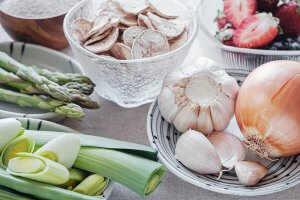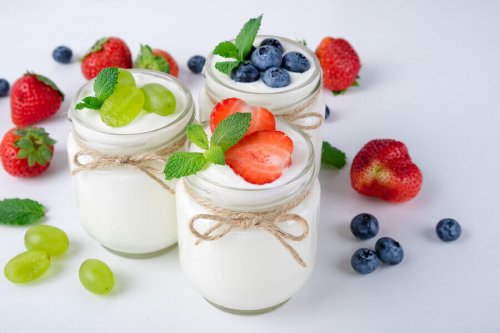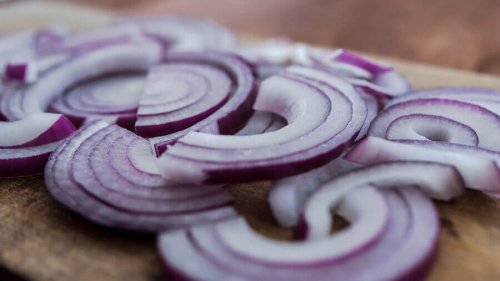Prebiotics: Why are they so Good for Gut Flora?

In the last few years, more businesses have been engaged in the research and commercialization of functional foods. It turns out that these are instruments for improving peoples’ health. They also help to reduce the risk of certain diseases. Some examples of functional foods are those that companies add probiotics to. Perhaps, less well known are the prebiotics and symbiotics, but these can also be beneficial to health.
How do these three components differ?
Although they might be related, you can also find each of these individually. The use of probiotics, prebiotics, and symbiotics is on the rise. Even better, there’s a whole lot of scientific evidence that backs their usage.
According to the FAO, probiotics are “living microorganisms that exert beneficial actions upon the health of the host when administered in appropriate quantities.” In other words, they’re living microorganisms that have certain effects on the body. Bacteria of the Lactobacillus genus are probiotics that people use for their fermenting qualities. You can find Lactobacillus in yogurts.
On the other hand, experts call the substratum that uses the probiotics “prebiotics.” These are some of the components you can find in dietary fiber. They affect the host positively. That’s because they selectively stimulate the growth and metabolic activity of certain strains of bacteria in the colon.
The upper gastrointestinal tract can’t digest these large molecules. That’s why they reach the large intestine fully intact. Only there are they broken down by the bacterial microflora. As this happens, the colon’s conditions improve and they generate healthy bacterial biomass.
Lastly, symbiotics are a mix of probiotics and prebiotics. Their main function is to improve the survival of healthy bacteria. The end goal of this is to modify the gut flora and metabolism.
Legislation on prebiotics
In order for the government to consider an ingredient in food to be prebiotic, it must fulfill the following qualifications:
- The upper part of the digestive tract should neither digest it nor absorb it.
- A limited number of potentially beneficial colon bacteria should ferment it selectively. Some examples of these are bifidobacteria and lactobacillus.

- It has to be capable of altering the colon’s microflora and making it healthy. One example of how it does this is by reducing the number of putrefactive organisms found there.
Currently, the oligosaccharides with probiotic properties that researchers are studying and recognizing the most are the fructans. The most important source of fructans in the diet are wheat derivatives, onions, garlic, bananas, and leeks.
Inulin and its prebiotic properties
Inulin is a fructan that you can find in a wide variety of plants. However, the best place to find it is in chicory root, leeks, garlic, and bananas. Some other good sources for it are barley, wheat, honey, onions, asparagus, and artichokes. Grasses, such as cereals, are also great ways to consume it.
Inulin has a soft neutral flavor. It’s also more or less water-soluble and it’s great for adding flavor and volume to food. That’s why it has diverse applications in the food industry. You can use it to substitute sugar, replace fats, change the texture of foods, or stabilize foam or emulsions. That’s why companies put it into a wide variety of products. Some of these are dairy, fermented foods, jams, desserts, mousses, ice creams, and bakery products.
The maximum dosage allowed for adding new food to your diet is 10 grams per day in single doses. If you’re eating it in multiple doses, then 20 grams per day is acceptable. In higher amounts than this, it could cause gastrointestinal issues. Some examples of these are diarrhea, intestinal noise, and flatulence.
How do they influence the gut flora?
Bacteria that inhabit the last stretch of the small intestine, the colon, need sustenance. Carbohydrates that you didn’t digest are the main substratum. Scientists have seen that the presence of probiotics in the colon results in bacterial fermentation. They’ve observed this in laboratory studies.

The fermentation process produces compounds such as hydrogen or in methane form. There’s also an increase in the bacterial population. Even though this sounds dangerous, the lining of the intestines is populated by microscopic creatures. Together, these make up the microecosystem experts call the microbiome.
In order to maintain balance in this ecosystem, you can use two strategies. One is to feed the microbes that are there. That way, they’ll grow and provide sustenance (prebiotics) or directly provide living microbes (probiotics).
Positive effects of prebiotics
The fermentation of prebiotics decreases the pH of the colon. It also inhibits the growth of pathogenic bacteria such as E. coli. Aside from this, this process also causes the formation of large quantities of short-chain fatty acids. Some examples of these are acetic acid, propionic acid, and butyric acid. These increase calcium and magnesium absorption.
Butyric acid, which is also one of these short-chain fatty acids, is the main source of energy for the colon’s epithelium. There’s also evidence to show that it has strong functional effects. For example, it might help with reducing the growth of tumor cells.
On a final note, scientists have demonstrated something interesting about soluble fiber. They’ve found that it interacts with bile acids and increases fecal excretion. This leads to the reduction of the plasma concentration of LDL cholesterol.
In the last few years, more businesses have been engaged in the research and commercialization of functional foods. It turns out that these are instruments for improving peoples’ health. They also help to reduce the risk of certain diseases. Some examples of functional foods are those that companies add probiotics to. Perhaps, less well known are the prebiotics and symbiotics, but these can also be beneficial to health.
How do these three components differ?
Although they might be related, you can also find each of these individually. The use of probiotics, prebiotics, and symbiotics is on the rise. Even better, there’s a whole lot of scientific evidence that backs their usage.
According to the FAO, probiotics are “living microorganisms that exert beneficial actions upon the health of the host when administered in appropriate quantities.” In other words, they’re living microorganisms that have certain effects on the body. Bacteria of the Lactobacillus genus are probiotics that people use for their fermenting qualities. You can find Lactobacillus in yogurts.
On the other hand, experts call the substratum that uses the probiotics “prebiotics.” These are some of the components you can find in dietary fiber. They affect the host positively. That’s because they selectively stimulate the growth and metabolic activity of certain strains of bacteria in the colon.
The upper gastrointestinal tract can’t digest these large molecules. That’s why they reach the large intestine fully intact. Only there are they broken down by the bacterial microflora. As this happens, the colon’s conditions improve and they generate healthy bacterial biomass.
Lastly, symbiotics are a mix of probiotics and prebiotics. Their main function is to improve the survival of healthy bacteria. The end goal of this is to modify the gut flora and metabolism.
Legislation on prebiotics
In order for the government to consider an ingredient in food to be prebiotic, it must fulfill the following qualifications:
- The upper part of the digestive tract should neither digest it nor absorb it.
- A limited number of potentially beneficial colon bacteria should ferment it selectively. Some examples of these are bifidobacteria and lactobacillus.

- It has to be capable of altering the colon’s microflora and making it healthy. One example of how it does this is by reducing the number of putrefactive organisms found there.
Currently, the oligosaccharides with probiotic properties that researchers are studying and recognizing the most are the fructans. The most important source of fructans in the diet are wheat derivatives, onions, garlic, bananas, and leeks.
Inulin and its prebiotic properties
Inulin is a fructan that you can find in a wide variety of plants. However, the best place to find it is in chicory root, leeks, garlic, and bananas. Some other good sources for it are barley, wheat, honey, onions, asparagus, and artichokes. Grasses, such as cereals, are also great ways to consume it.
Inulin has a soft neutral flavor. It’s also more or less water-soluble and it’s great for adding flavor and volume to food. That’s why it has diverse applications in the food industry. You can use it to substitute sugar, replace fats, change the texture of foods, or stabilize foam or emulsions. That’s why companies put it into a wide variety of products. Some of these are dairy, fermented foods, jams, desserts, mousses, ice creams, and bakery products.
The maximum dosage allowed for adding new food to your diet is 10 grams per day in single doses. If you’re eating it in multiple doses, then 20 grams per day is acceptable. In higher amounts than this, it could cause gastrointestinal issues. Some examples of these are diarrhea, intestinal noise, and flatulence.
How do they influence the gut flora?
Bacteria that inhabit the last stretch of the small intestine, the colon, need sustenance. Carbohydrates that you didn’t digest are the main substratum. Scientists have seen that the presence of probiotics in the colon results in bacterial fermentation. They’ve observed this in laboratory studies.

The fermentation process produces compounds such as hydrogen or in methane form. There’s also an increase in the bacterial population. Even though this sounds dangerous, the lining of the intestines is populated by microscopic creatures. Together, these make up the microecosystem experts call the microbiome.
In order to maintain balance in this ecosystem, you can use two strategies. One is to feed the microbes that are there. That way, they’ll grow and provide sustenance (prebiotics) or directly provide living microbes (probiotics).
Positive effects of prebiotics
The fermentation of prebiotics decreases the pH of the colon. It also inhibits the growth of pathogenic bacteria such as E. coli. Aside from this, this process also causes the formation of large quantities of short-chain fatty acids. Some examples of these are acetic acid, propionic acid, and butyric acid. These increase calcium and magnesium absorption.
Butyric acid, which is also one of these short-chain fatty acids, is the main source of energy for the colon’s epithelium. There’s also evidence to show that it has strong functional effects. For example, it might help with reducing the growth of tumor cells.
On a final note, scientists have demonstrated something interesting about soluble fiber. They’ve found that it interacts with bile acids and increases fecal excretion. This leads to the reduction of the plasma concentration of LDL cholesterol.
All cited sources were thoroughly reviewed by our team to ensure their quality, reliability, currency, and validity. The bibliography of this article was considered reliable and of academic or scientific accuracy.
- Ashwell M. Conceptos sobre alimentos funcionales. ILSI Europe Concise Monograph Series, ILSI Press 2005
- Davy B, Melby C. The effect of fiber-rich carbohydrates on features of Syndrome X. J Am Diet Assoc 2003;103 (1):86-96
- Kolida S, Tuohy K, Gibson G. Prebiotic effects of Inulin and Oligofructosa. Br J Nutr. 2002 87, Suppl. 2, S193-S197
- Van Loo J, Coussement P, De Leenheer L, Hoebregs H, Smits G. On the presence of inulin and oligofructose as natural ingredients in the Western Diet. Critical Reviews in Food Science and Nutrition 1995;35(6):525-552
- Coussement P. A new generation of dietary fibres. European Dairy Magazine 1995; vol 3:22-24
- Kolida S, Tuohy K, Gibson GR. Prebiotic effects of Inulin and Oligofructose and. Br J Nutr 2002; 87, Suppl 2: 193S-197S
- Mollet B, Rowland I. Functional foods: at the frontier between food and pharma. Curr Opin Biotechnol. 2002;13:483-5
This text is provided for informational purposes only and does not replace consultation with a professional. If in doubt, consult your specialist.








